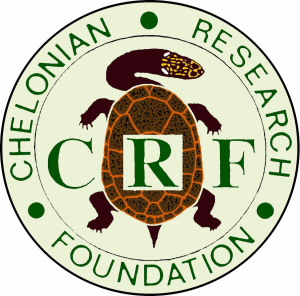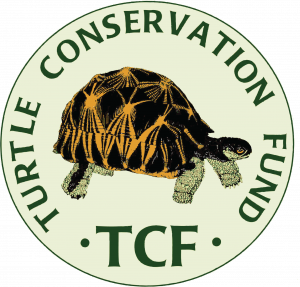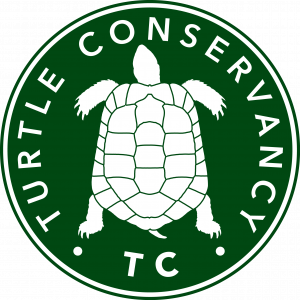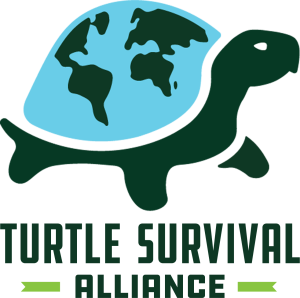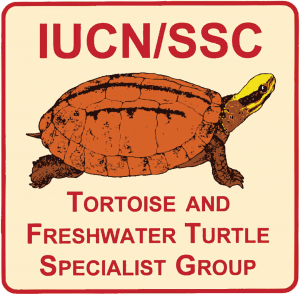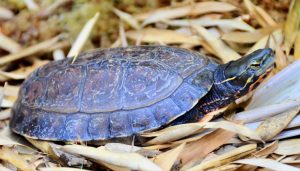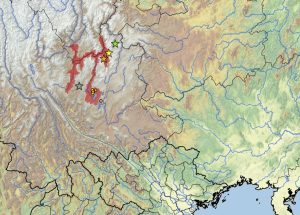Cuora yunnanensis, 130
Cuora yunnanensis (Boulenger 1906) –
Yunnan Box Turtle
Torsten Blanck1, John B. Iverson2, Ting Zhou3, and Fengting Zhou4
1Cuora Conservation Center of Turtle Island, 8530 Deutschlandsberg, Austria [[email protected]];
2Department of Biology, Earlham College, Richmond, Indiana 47374 USA [[email protected]];
3Hainan Academy of Forestry, Haikou 571100 China [[email protected]];
4Haikou Jiuzhou Turtle Research Center, Haikou 571100 China
Summary. – The Yunnan Box Turtle, Cuora yunnanensis (family Geoemydidae), was described in 1906 and considered lost or extinct for nearly a century. The species reappeared in the Chinese trade in 2004 and was subsequently also recorded from the wild. It has been validated genetically, thereby negating any speculation of hybrid origin. This species likely represents, together with its genetic sister taxon Cuora zhoui, two of the rarest extant chelonian species. It is a medium-sized freshwater turtle (straight-line midline carapace length reaches 152 mm in males and 190 mm in females). Information on the biology of this species is mainly based on captive studies. Mating occurs in spring and fall, but usually only a single clutch of 4–8 eggs (8–13 g each) is laid each year, usually in April to May. Incubation takes 64–68 days. Due to rampant habitat destruction and the demand in the Chinese national pet trade, it is severely threatened by extinction.
Distribution. – China. Occurs in north-central Yunnan and possibly also in southern Sichuan.
Synonymy. – Cyclemys yunnanensis Boulenger 1906, Cuora yunnanensis, Pyxiclemmys yunnanensis.
Subspecies. – None recognized.
Status. – IUCN 2025 Red List: Critically Endangered (CR B2ab(ii,iii,v), D; assessed 2010), changed from prior status as Extinct (EX; assessed 2000); CITES Appendix II (since 2000); European Union Council Regulation 338/97 (EUCR) CR: Annex B (since 2000); China Red Data Book: Probably Extinct (assessed 1998); Class II of China’s Nationally Protected animals since 1988 (as all Cuora species considered native to China); China Species Red List: Critically Endangered (2016), Extinct (2004).
Citation:
Blanck, T., Iverson, J.B., Zhou, T., and Zhou, F. 2025. Cuora yunnanensis (Boulenger 1906) – Yunnan Box Turtle. In: Rhodin, A.G.J., Iverson, J.B., van Dijk, P.P., Stanford, C.B., Goode, E.V., Buhlmann, K.A., and Mittermeier, R.A. (Eds.). Conservation Biology of Freshwater Turtles and Tortoises: A Compilation Project of the IUCN/SSC Tortoise and Freshwater Turtle Specialist Group. Chelonian Research Monographs 5(19):130.1–13. doi: 10.3854/crm.5.130.yunnanensis.v1.2025; www.iucn-tftsg.org/cbftt/.
Adobe Acrobat 6.0 or later required)
Adult male Cuora yunnanensis from Chuxiong prefecture, Yunnan, China.
Photo by Torsten Blanck.
Distribution:
Distribution of Cuora yunnanensis in north-central Yunnan and (possibly) southern Sichuan, China. Colored shading = hypothesized historical indigenous range; yellow dots = museum and occurrence records of possibly native populations based on literature records (Iverson 1992; Blanck et al. 2006; TTWG 2021, 2025); orange dots = probable trade specimens; stars = type localities (orange star = restricted syntype locality (Iverson 1992); green star = restricted lectotype locality (Blanck et al. 2006), but with erroneous GPS coordinates; yellow star = restricted lectotype locality (Blanck et al. 2006) with corrected GPS coordinates; gray star = approximate type locality of Cuora pitheca, the early Pliocene fossil species). Distribution is based on fine-scaled GIS-defined level 12 HUCs (hydrologic unit compartments) constructed around localities and then adding HUCs that connect point localities in the same watershed or physiographic region, and similar habitats and elevations as verified HUCs, based on TTWG (2021, 2025) and adjusted based on data from the authors. Map by Chelonian Research Foundation.


